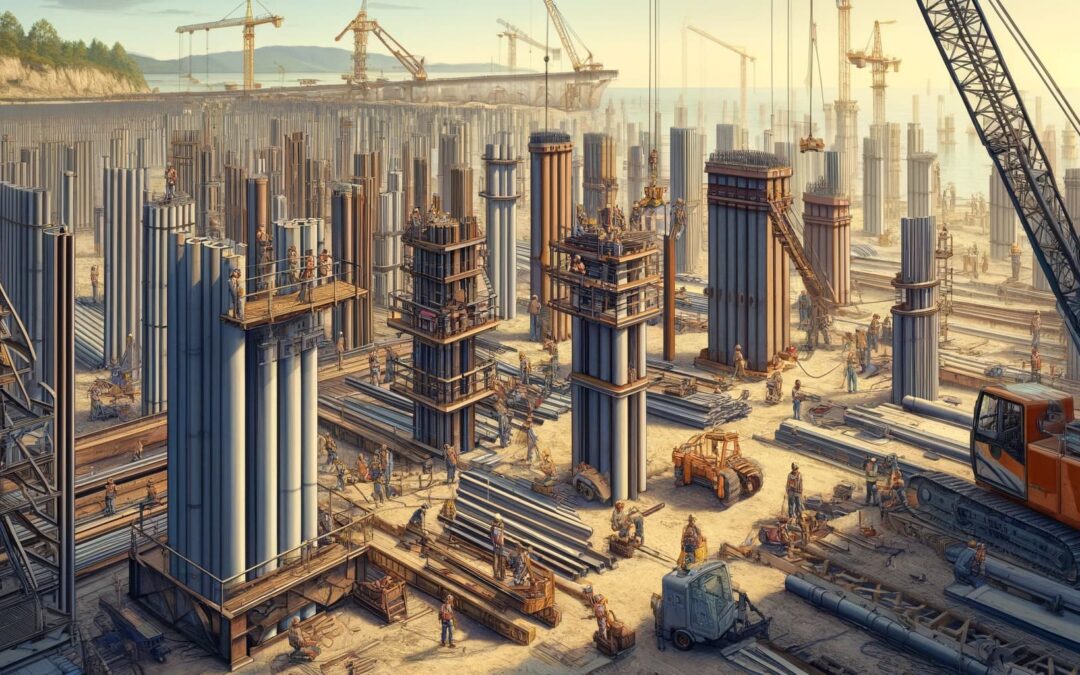Steel columns are integral to the structural integrity of a wide range of buildings, from commercial skyscrapers to residential homes. The installation of these columns is a critical process that demands precision and understanding of various techniques suited to different types of steel columns. This guide provides an overview of the installation processes for several common types of steel columns and offers insights into the challenges and best practices associated with each.
Types of Steel Columns and Their Installation Techniques
Steel columns come in various shapes and sizes, each designed for specific structural needs. Here’s a look at some common types and their installation methods:
H-Shape Columns:
- Installation Method: H-shape columns are installed using cranes to lift the columns into position. Once in place, they are bolted or welded to steel beams at the top and mounted on concrete foundations at the bottom. High-strength bolts or full-penetration welds are commonly used to ensure robust connections.
- Challenges: Ensuring vertical alignment is critical and often challenging due to the column’s height and weight.
- Best Practice: Use laser-guided tools or plumb bobs to verify alignment before securing the column permanently.
Box Columns:
- Installation Method: Box columns are typically prefabricated and transported to the site, where they are hoisted into position by cranes. They are then connected to other steel members through welding or bolting.
- Challenges: Handling and transportation due to their enclosed shape and potentially large size.
- Best Practice: Check for any deformation or damage post-transport and prior to installation; ensure all sides are accessible for effective joining.
Circular Hollow Sections (CHS):
- Installation Method: CHS columns are also lifted into place with cranes. These columns are often used where aesthetics are important, so careful handling to prevent surface damage is crucial. They can be joined by welding or using flange connections.
- Challenges: CHS columns can be more difficult to align due to their symmetrical shape.
- Best Practice: Employ precision measurement tools to ensure exact placement and alignment.
Angle Columns:
General Installation Tips
- Safety First: Always use appropriate safety gear and secure the work area. Steel column installation involves significant risks due to the weight and size of the materials.
- Preparation: Prepare the site and foundations well before the columns arrive. Ensure that all measurements are correct and that the foundations can support the load.
- Professional Expertise: Given the complexities involved, professional structural engineers should oversee the installation process. They can provide crucial insights into load distribution, structural integrity, and building codes.
- Inspections: Regular inspections during installation are vital to catch and rectify any potential issues early. This includes checking welds, bolt connections, and the general condition of the columns and foundations.
Conclusion
Installing various types of steel columns is a complex task that requires meticulous planning, precise execution, and continuous oversight. Each type of column has specific installation techniques that, when followed correctly, ensure the structural stability and longevity of the building. By adhering to best practices and focusing on safety, teams can effectively manage the risks and challenges associated with this critical aspect of construction.

